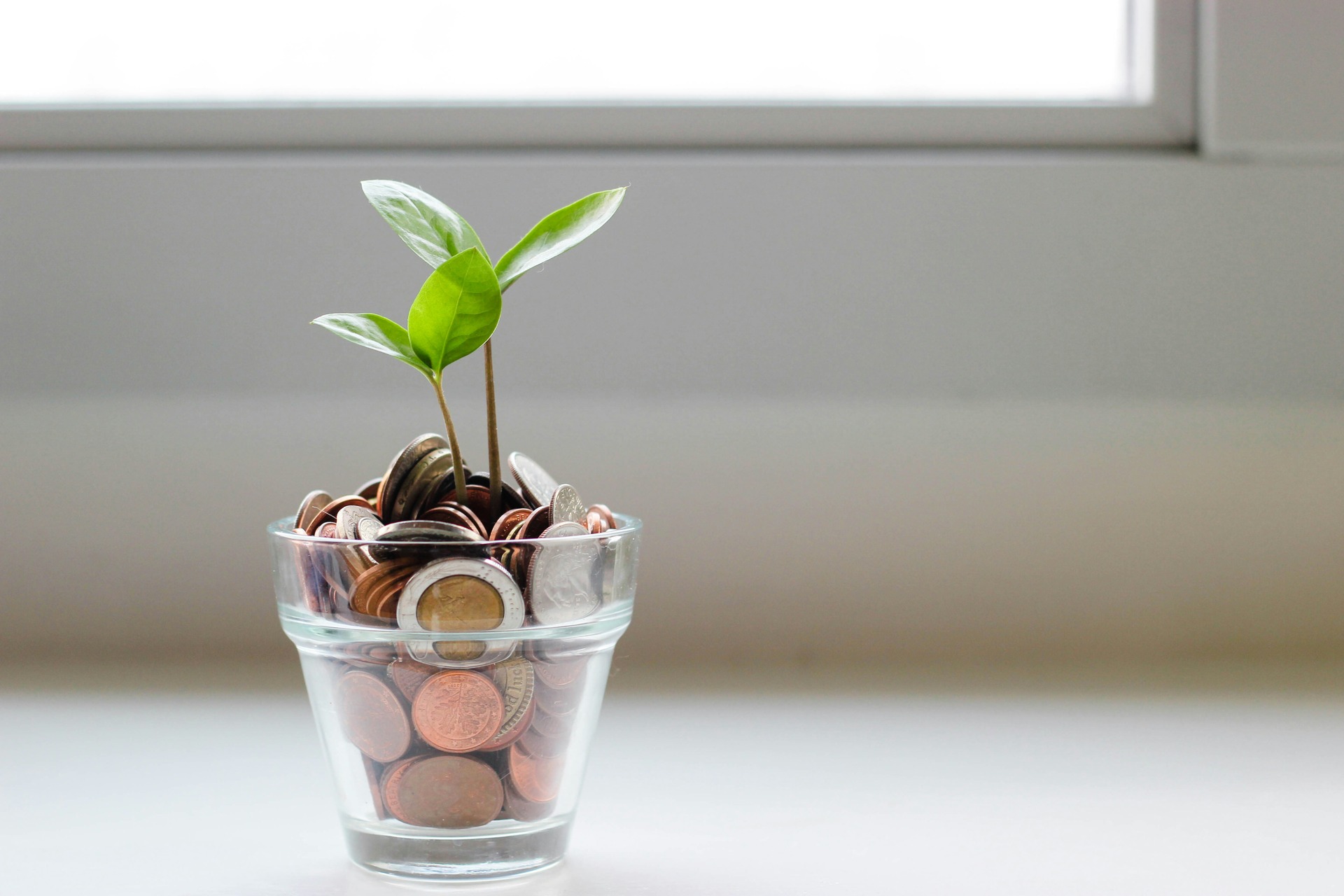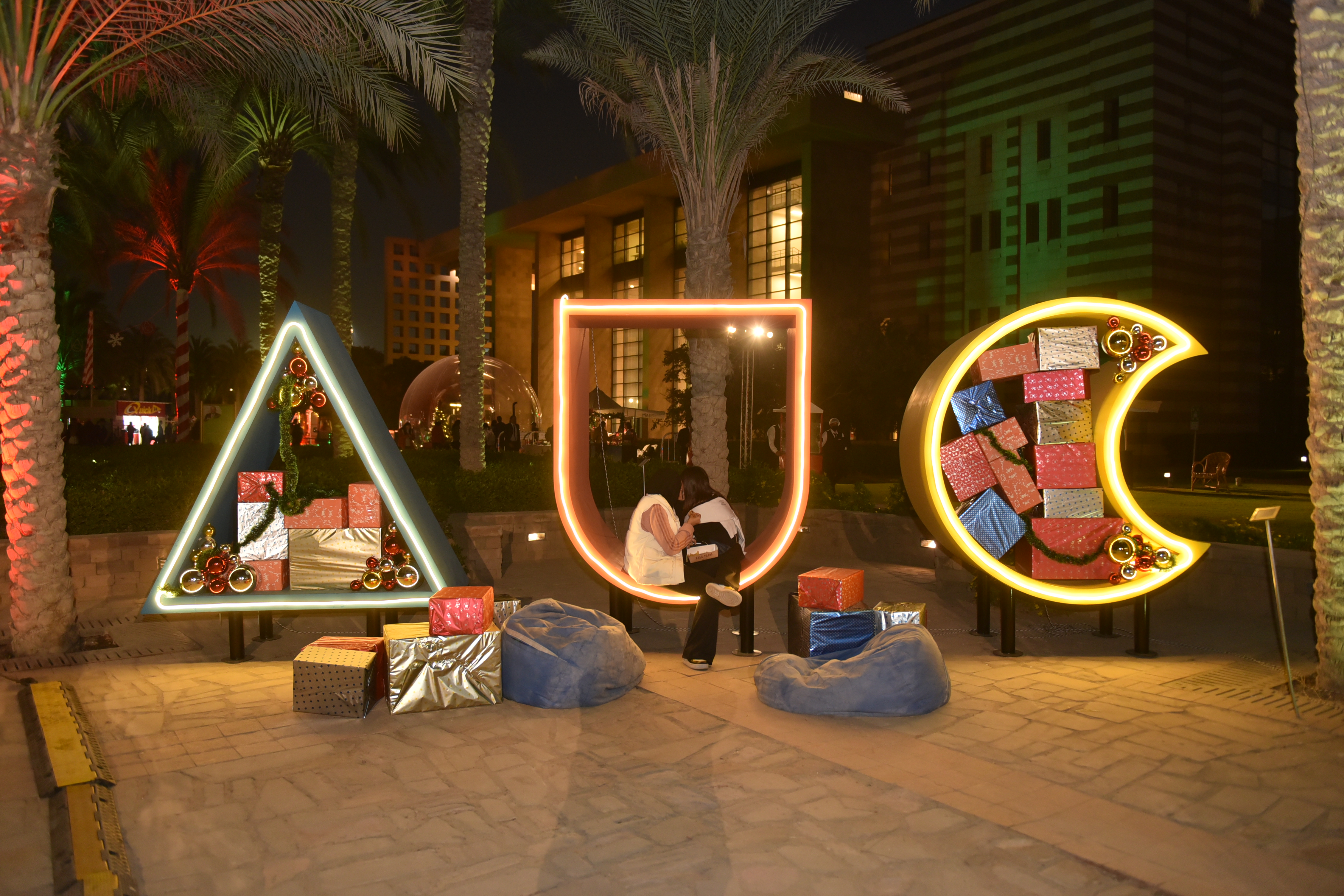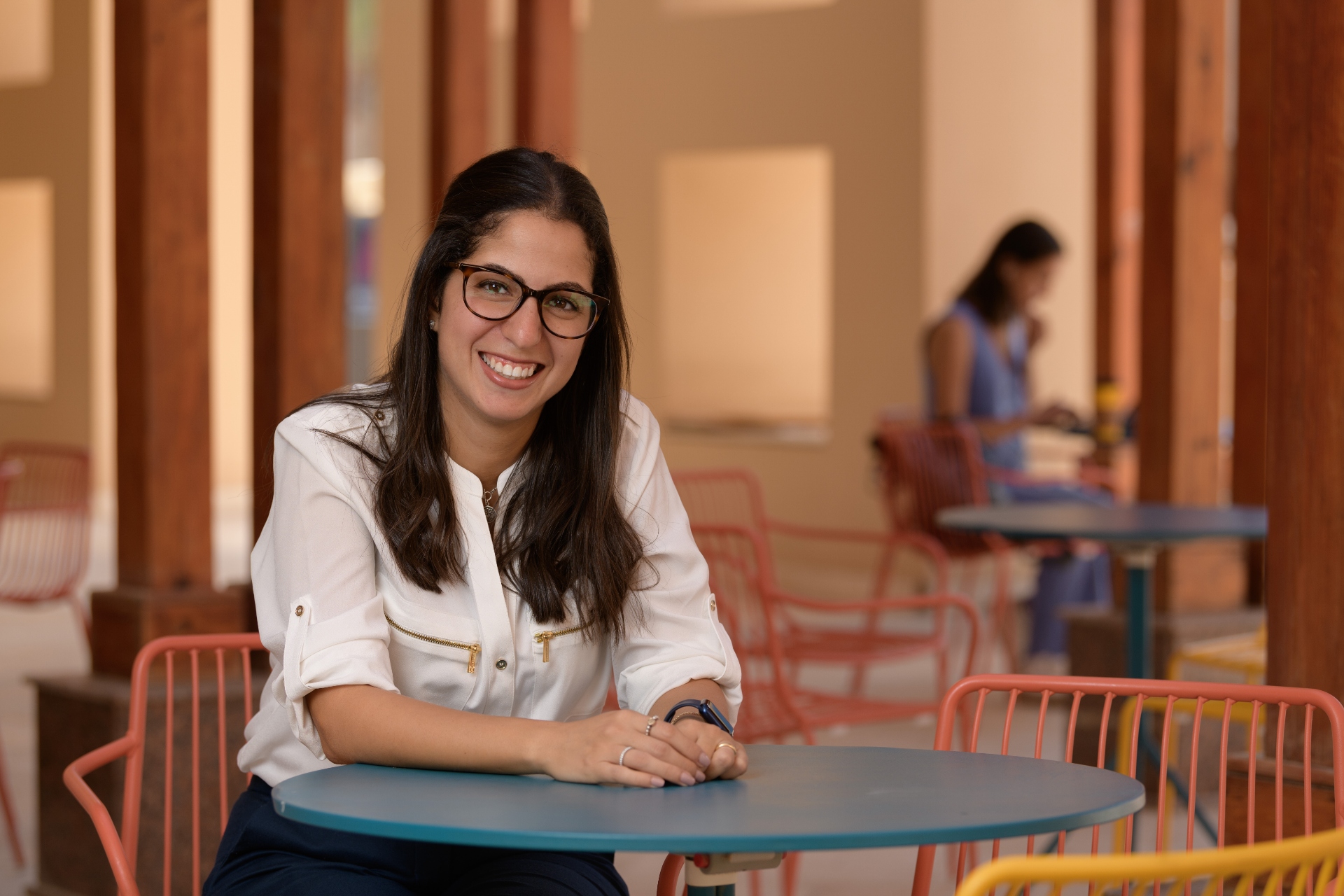Is Hybrid the Future?
By Reem Abouemera
Will the future of education be online, hybrid or completely face to face? What will happen in the post-COVID-19 classroom? Even before the pandemic, Research and Markets had forecasted that the online education market would surge to at least $350 billion by 2025. What happens now, with the impact of COVID-19 becoming centric in education?
Hoda Mostafa, professor of practice and director of the Center for Learning and Teaching, and Maha Bali '01, associate professor of practice at CLT, believe it's all about the individuals using the tools rather than the tools themselves.
"The digital education space is rich with both pedagogical and technological innovations, and the decisions we take now can possibly open up new opportunities," said Mostafa. "I am personally a pedagogy-first proponent and see technology as the enabler."
"Nothing is ever really about the 'digital tools,' or at least, it shouldn't be," Bali affirmed.
"Sometimes, a tool can replace something you're doing in-person to allow you to do it the same way, supplement it or enhance it. Occasionally, a digital tool can help you do something you could not do before, but it's always about what it is you're trying to do and whether a tool exists that can be used -- or repurposed -- to fit your goals," Bali added.
For Bali, it's always about humans and social connections -- not tools, since there are almost no "new" tools that appeared during COVID-19. It's just that suddenly more people had to learn to use them and choose the ones that fit their needs.
"People are innovative, not tools," Bali emphasized. "You can use simple and straightforward tools every day, like Google Slides, in innovative ways. Digital literacy is more important than digital tools."
For instance, using Twitter isn't about learning how to tweet but about learning how to use it to create a campaign. Similarly, many people around the world use a tool like Zoom, but how many are using it to create engaging classes and meetings?
So is hybrid the future of education?
Mostafa perceives that in some contexts, traditional classrooms and even workplaces will no longer "work" after everyone has been exposed to studying and working in vastly different approaches than the usual, which is why hybrid models are here to stay.
Bali agrees that hybrid teaching will likely continue beyond the pandemic because it was already happening before it. "I'm sure that although many people were introduced to online learning at a time of trauma, some will realize the benefits of sometimes using non-traditional ways of teaching in the future," she stressed. "Whether it's for logistical reasons or because some tools enable equitable learning, each teacher will discover what works for them."
Despite that, Bali still believes that university education is much more than the cognitive learning component that happens in classrooms.
"Students gain so much from the social interaction, extracurricular activities, and other informal and less-structured learning that happens on campus. Universities will likely continue to offer and value such experiences," she affirmed.
For Mostafa, there seem to be more questions than answers at this point. "What will our learning spaces look like in the near and far future? Will we ever return to the face-to-face teaching we are accustomed to, or will we craft a new set of delivery methods, pedagogies and technologies that allow for fluid teaching and learning? What kind of support environment can centers for learning and teaching provide instructors as they drive this change and help navigate the array of digital tools that best support learning?" These are all questions yet to be answered, and the discussions continue.
"Many communities within institutions across the globe are responding to the pandemic by engaging in conversations around the future of higher education using an innovative mindset to challenge the status quo," she added.
As for Bali, while she's certain that hybrid learning isn't just a buzzword and is here for the long haul, she deems it vital to keep the issue of privilege front and center: Who has privileged access to technology, and who doesn't? What about access to high-quality devices? The internet? "Even some privileged neighborhoods don't have great internet access, and that is an issue that needs to be solved at the infrastructure level," she said.
But all in all, opportunities are evidently present, with digital tools paving the way for them.
"With this complexity comes opportunity when communities of practice look to others for guidance, draw from past experiences and, most importantly, listen with empathy and care to our learners," said Mostafa. "I hope that the higher education communities will embrace this crisis with innovation, accompanied by an openness to experimentation and learning -- one challenge at a time."





 Outdoor classes might become a norm in the post-COVID world
Outdoor classes might become a norm in the post-COVID world
 Dina Iskander, adjunct professor of voice and founder and director of the AUC Opera Ensemble, sings a Broadway tune and a tribute to David Llewellyn Hales (1957-2020), a musician, accompanist and coach who worked with students and ensembles at AUC, and as a reminder to stay strong during these challenging times.
Dina Iskander, adjunct professor of voice and founder and director of the AUC Opera Ensemble, sings a Broadway tune and a tribute to David Llewellyn Hales (1957-2020), a musician, accompanist and coach who worked with students and ensembles at AUC, and as a reminder to stay strong during these challenging times. John Baboukis, professor and director of AUC's music program, initiated This is Not a Concert series to provide "musical comfort food" during the quarantine
John Baboukis, professor and director of AUC's music program, initiated This is Not a Concert series to provide "musical comfort food" during the quarantine Nesma Mahgoub '13, adjunct professor of voice at AUC, founder and director of A caPop choir and professional singer, sings Rise Up and I Dreamed a Dream from Les Miserables.
Nesma Mahgoub '13, adjunct professor of voice at AUC, founder and director of A caPop choir and professional singer, sings Rise Up and I Dreamed a Dream from Les Miserables.




 "I am really delighted to be able to interact with my students and keep them going right from the first week of online teaching. Delivering the lectures during scheduled class time, using Blackboard Collaborate Ultra, allows students to be interactive by participating in real-time questionand-answer sessions." -- Abdelaziz Khlaifat, professor, Department of Petroleum and Energy Engineering
"I am really delighted to be able to interact with my students and keep them going right from the first week of online teaching. Delivering the lectures during scheduled class time, using Blackboard Collaborate Ultra, allows students to be interactive by participating in real-time questionand-answer sessions." -- Abdelaziz Khlaifat, professor, Department of Petroleum and Energy Engineering "The transition to online teaching has been smooth. Of course, there are challenges, but according to feedback from my students, they are satisfied. These are difficult times for us all, and we all have to come together and support each other by being understanding of how the disruptions to our daily routines have affected all aspects of our lives. I am thankful for how the AUC community as a whole has been very supportive." -- Adel El Adawy, assistant professor, Middle East Studies Center
"The transition to online teaching has been smooth. Of course, there are challenges, but according to feedback from my students, they are satisfied. These are difficult times for us all, and we all have to come together and support each other by being understanding of how the disruptions to our daily routines have affected all aspects of our lives. I am thankful for how the AUC community as a whole has been very supportive." -- Adel El Adawy, assistant professor, Middle East Studies Center "We don't always get the chance to work outdoors and enjoy the sun and breeze. This is an opportunity to make the best of the current circumstances. Stay positive, stay safe and stay home!" -- Caroline Mikhail (MA '14), executive assistant to the chair, Department of Computer Science and Engineering
"We don't always get the chance to work outdoors and enjoy the sun and breeze. This is an opportunity to make the best of the current circumstances. Stay positive, stay safe and stay home!" -- Caroline Mikhail (MA '14), executive assistant to the chair, Department of Computer Science and Engineering "I've discovered that making videos of my lectures is a great resource. Students tell me they like being able to rewatch any part they didn't catch the first time. I can tell from online responses that they are catching more of the content than they do taking notes in person." -- Elisabeth Kennedy, visiting assistant professor, Department of History
"I've discovered that making videos of my lectures is a great resource. Students tell me they like being able to rewatch any part they didn't catch the first time. I can tell from online responses that they are catching more of the content than they do taking notes in person." -- Elisabeth Kennedy, visiting assistant professor, Department of History "I gave my first online presentation through Zoom in the final course for the Professional Educator Diploma, and I rocked it! Keep it up, believe in yourself and stay safe." -- Islam Ahmed, School of Continuing Education student
"I gave my first online presentation through Zoom in the final course for the Professional Educator Diploma, and I rocked it! Keep it up, believe in yourself and stay safe." -- Islam Ahmed, School of Continuing Education student "The transition to remote teaching has been an overwhelming experience. We have gained a huge amount of knowledge in a very short time, and for that, I am extremely grateful. Distant learning is full of potential that is now smoothly implemented, and we will continue benefiting from it even after these hard times are gone." -- Mariam Abouhadid, adjunct assistant professor, Department of Architecture
"The transition to remote teaching has been an overwhelming experience. We have gained a huge amount of knowledge in a very short time, and for that, I am extremely grateful. Distant learning is full of potential that is now smoothly implemented, and we will continue benefiting from it even after these hard times are gone." -- Mariam Abouhadid, adjunct assistant professor, Department of Architecture "Working from home is definitely a new challenge for me, especially while having two kids around, but during these difficult times, we all have to stay home and stay safe so we can get through this together." -- Ragya Sorour, executive assistant to the chair, Department of Biology
"Working from home is definitely a new challenge for me, especially while having two kids around, but during these difficult times, we all have to stay home and stay safe so we can get through this together." -- Ragya Sorour, executive assistant to the chair, Department of Biology "Teaching online from home proved what I used to say to my trainees: 'Teachers will not be replaced by technology, but teachers who do not use technology will be replaced.'" -- Osama Sebaai, instructor and teacher trainer, School of Continuing Education
"Teaching online from home proved what I used to say to my trainees: 'Teachers will not be replaced by technology, but teachers who do not use technology will be replaced.'" -- Osama Sebaai, instructor and teacher trainer, School of Continuing Education "Working remotely is sometimes challenging, but it has definitely pushed me to find creative ways to maintain productivity. It also helps when my dog is by my side in every online meeting I attend. She is my support system." -- Suzan Kenawy '09, '20, marketing manager, AUC Press and Bookstores
"Working remotely is sometimes challenging, but it has definitely pushed me to find creative ways to maintain productivity. It also helps when my dog is by my side in every online meeting I attend. She is my support system." -- Suzan Kenawy '09, '20, marketing manager, AUC Press and Bookstores "These difficult circumstances enabled me to discover how patient, kind and understanding my professors are. Thank you to all AUC staff members who work in silence in order to ease our online journey." -- Samaa Abdelhamid, AUC student
"These difficult circumstances enabled me to discover how patient, kind and understanding my professors are. Thank you to all AUC staff members who work in silence in order to ease our online journey." -- Samaa Abdelhamid, AUC student "I am the corporate financial planning and analysis manager at PepsiCo headquarters in New York. I've got some work-from-home tips for everyone: Set a daily working hours timetable to be focused, dress up to freshen up, take refresh breaks every couple of hours, stay more connected with your teammates, organize a simple workstation and motivate your family members." -- Farah Haggag '10, '12
"I am the corporate financial planning and analysis manager at PepsiCo headquarters in New York. I've got some work-from-home tips for everyone: Set a daily working hours timetable to be focused, dress up to freshen up, take refresh breaks every couple of hours, stay more connected with your teammates, organize a simple workstation and motivate your family members." -- Farah Haggag '10, '12 "We graduated from the architectural engineering program in 2016. We just got our master's in urban design from The University of British Columbia in Vancouver, Canada. Now we are volunteering with an advocacy group called Car Free Day to apply what we have learned during our master's program in the city." -- Islam Ibrahim El Banna '16 and Aya Khaled Abdelfatah '16
"We graduated from the architectural engineering program in 2016. We just got our master's in urban design from The University of British Columbia in Vancouver, Canada. Now we are volunteering with an advocacy group called Car Free Day to apply what we have learned during our master's program in the city." -- Islam Ibrahim El Banna '16 and Aya Khaled Abdelfatah '16 "I graduated with a master's in international human rights law and a graduate diploma in forced migration and refugee studies in 2006. I have fond memories of my schooling at AUC. I am currently teleworking in Silver Spring, Maryland, as the deputy director of the Office of Conflict Management and Mitigation with USAID. When things calm down and travel is available again, I will be working for USAID in Khartoum, Sudan, as the deputy director of Food for Peace."-- Felicia Genet (MA '06)
"I graduated with a master's in international human rights law and a graduate diploma in forced migration and refugee studies in 2006. I have fond memories of my schooling at AUC. I am currently teleworking in Silver Spring, Maryland, as the deputy director of the Office of Conflict Management and Mitigation with USAID. When things calm down and travel is available again, I will be working for USAID in Khartoum, Sudan, as the deputy director of Food for Peace."-- Felicia Genet (MA '06) "COVID-19 has hit the United Kingdom hard, and little did we know that we will be staying home. I am a program leader for Further Education and Training at Edge Hill University. COVID-19 has shown us here in Liverpool the power of people coming together. The great Arab community in Liverpool and the Arabic center's initiative to provide food and support for families are exceptional. Liverpool is one of the beautiful cities in North West England that always makes me feel like I am in Alexandria or Port Said because of its waterfront and beautiful seas. Regardless of the current situation and remote work, I feel lucky to be able to hear the birds singing in the garden and see the occasional seagulls trying to steal some food." -- Shereen Hamed Shaw '06
"COVID-19 has hit the United Kingdom hard, and little did we know that we will be staying home. I am a program leader for Further Education and Training at Edge Hill University. COVID-19 has shown us here in Liverpool the power of people coming together. The great Arab community in Liverpool and the Arabic center's initiative to provide food and support for families are exceptional. Liverpool is one of the beautiful cities in North West England that always makes me feel like I am in Alexandria or Port Said because of its waterfront and beautiful seas. Regardless of the current situation and remote work, I feel lucky to be able to hear the birds singing in the garden and see the occasional seagulls trying to steal some food." -- Shereen Hamed Shaw '06

 Moussa presents Egypt's oral arguments at the International Court of Justice, February 2024, photo courtesy of Jasmine Moussa
Moussa presents Egypt's oral arguments at the International Court of Justice, February 2024, photo courtesy of Jasmine Moussa Moussa at AUC New Cairo, photo by Gihad Belasy
Moussa at AUC New Cairo, photo by Gihad Belasy
 Diab and Yacoub
Diab and Yacoub


 Social Science stairs on AUC's Greek Campus, 1990s-2000s. Courtesy of the University Archives
Social Science stairs on AUC's Greek Campus, 1990s-2000s. Courtesy of the University Archives The Platform (Plat) on AUC's Greek Campus. Photo courtesy of the University Archives
The Platform (Plat) on AUC's Greek Campus. Photo courtesy of the University Archives Social Science stairs on AUC's Greek Campus, 1980s. Courtesy of the University Archives
Social Science stairs on AUC's Greek Campus, 1980s. Courtesy of the University Archives The steps in front of the School of Sciences and Engineering at AUC New Cairo. Photo by Ahmad El-Nemr
The steps in front of the School of Sciences and Engineering at AUC New Cairo. Photo by Ahmad El-Nemr

 Hassanein at her New Cairo studio.
Hassanein at her New Cairo studio.
 Harvey, Cleo and Cooper at Clooper Studios.
Harvey, Cleo and Cooper at Clooper Studios. Harvey and her sister pose with Cleo.
Harvey and her sister pose with Cleo. Cleo smiles for the camera.
Cleo smiles for the camera.
 1940s
1940s 1960s
1960s 1960s
1960s 1980s
1980s 1960s
1960s 1980s
1980s





